Data Brief 2020-019 | September 8, 2020 | Written and compiled by Leila Gonzales and Christopher Keane, AGI, September 2020
Download Data Brief
Recent Geoscience Graduate Employment during the Pandemic, August 2020
As of August 2020, 94% of geoscience graduates who earned their degree
between 2014-2018 were employed, while 77% of graduates from 2019 and
44% of graduates from 2020 reported the same. For geoscience graduates
who earned their degree this year, 16% of bachelor’s, 57% of master’s,
and 91% of doctorates have secured employment. For comparison, data from
the 2013-2018 AGI Geoscience Exit Survey shows that 20% of geoscience
graduates secured employment by the time they graduated. This data
varied by degree level, with 12% of bachelor’s, 36% of master’s and 56%
of doctorates securing employment by the time they graduated. The
current Geoscience COVID-19 study data does not show deviation from
long-term employment trends of recent geoscience graduates, and
illustrates the general progression from graduation to job seeking to
employment.
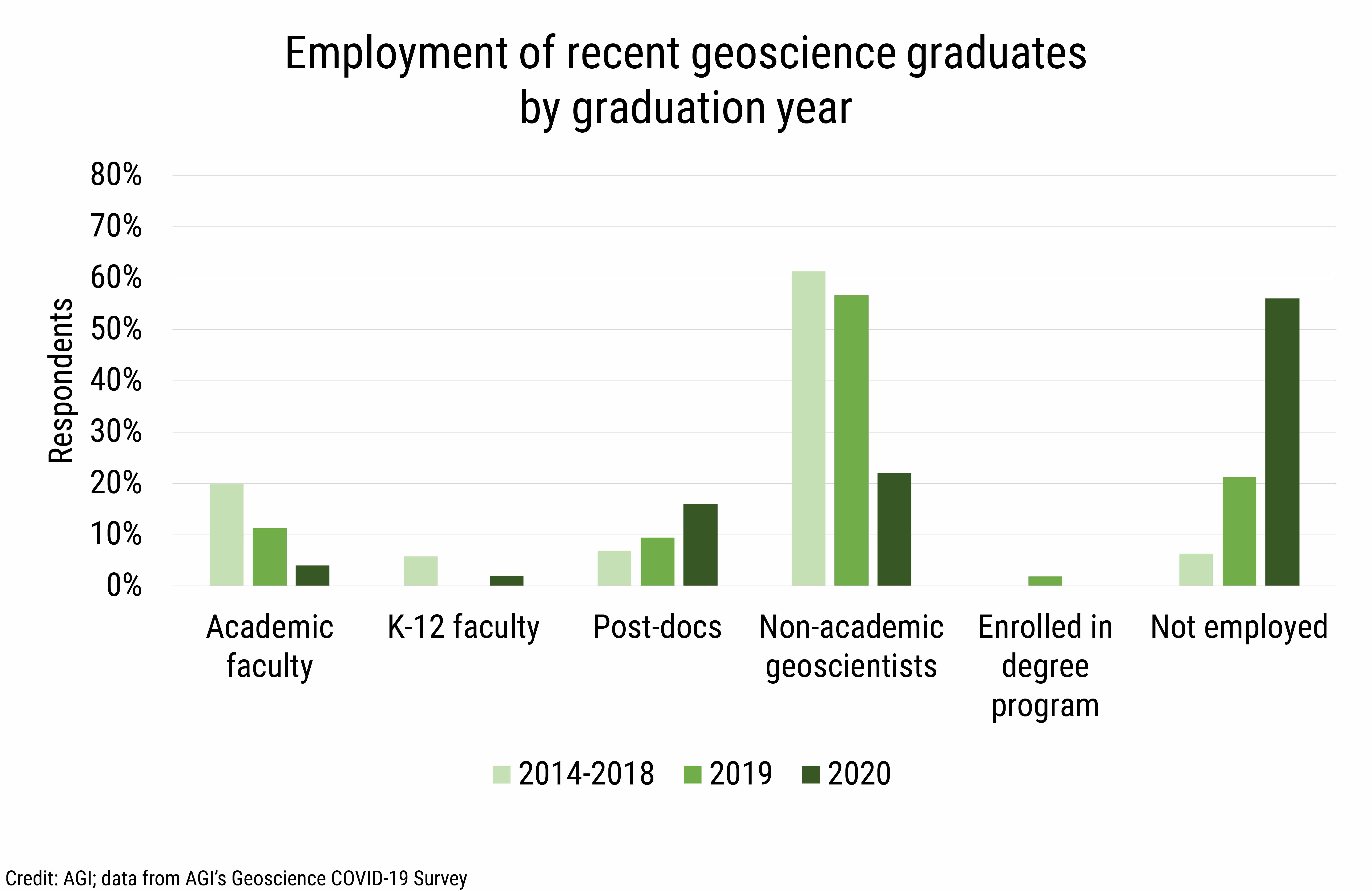
DB_2020-019 chart 01: Employment of recent geoscience graduates by graduation year (credit: AGI; data from AGI’s Geoscience COVID-19 Survey)
AGI
Recent geoscience doctorates were employed as academic faculty,
post-doctoral fellows or non-academic geoscientists, and the majority
of master’s and bachelor’s graduates were employed as non-academic
geoscientists. Only 1% of employed recent geoscience graduates lost
their job since February 2020.
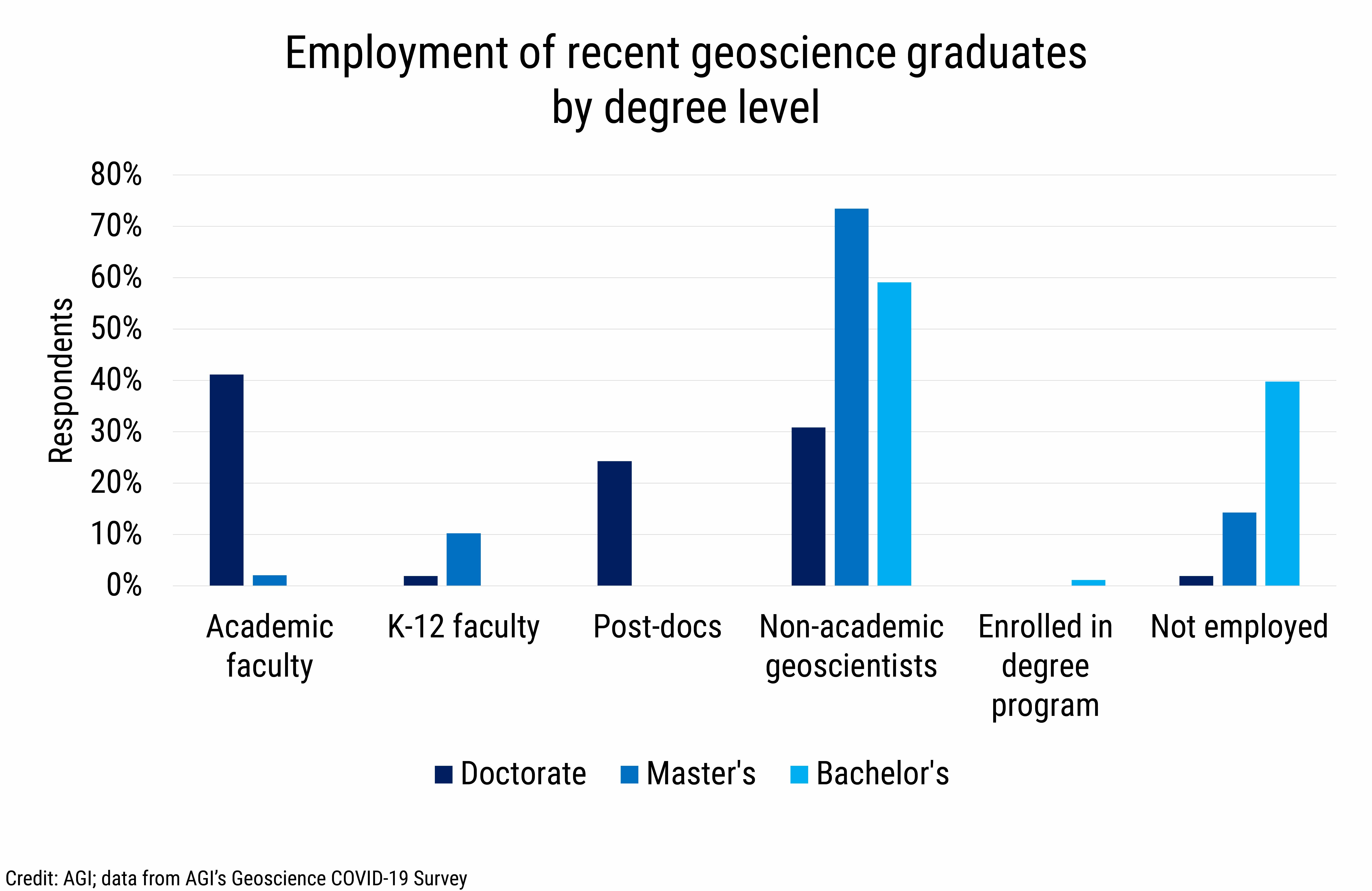
DB_2020-019 chart 02: Employment of recent geoscience graduates by degree level (credit: AGI; data from AGI’s Geoscience COVID-19 Survey)
AGI
Recent geoscience graduates secured employment across a wide variety of
sectors, with the highest percentages of graduates working in higher
education (42%), government (26%), and environmental services (14%).
Just over 5% of graduates secured employment in the non-profit sector
and within the energy sector. Recent geoscience graduates who were
employed in non-academic geoscience occupations were predominantly
employed as geoscientists, geoscience managers, geoscience technicians,
or geoscience engineers. Other non-academic occupations reported by
geoscientists included computer software and support, industrial
engineering, educational and library operations, policy analyst
positions, administrative support, agriculture, and construction
occupations.
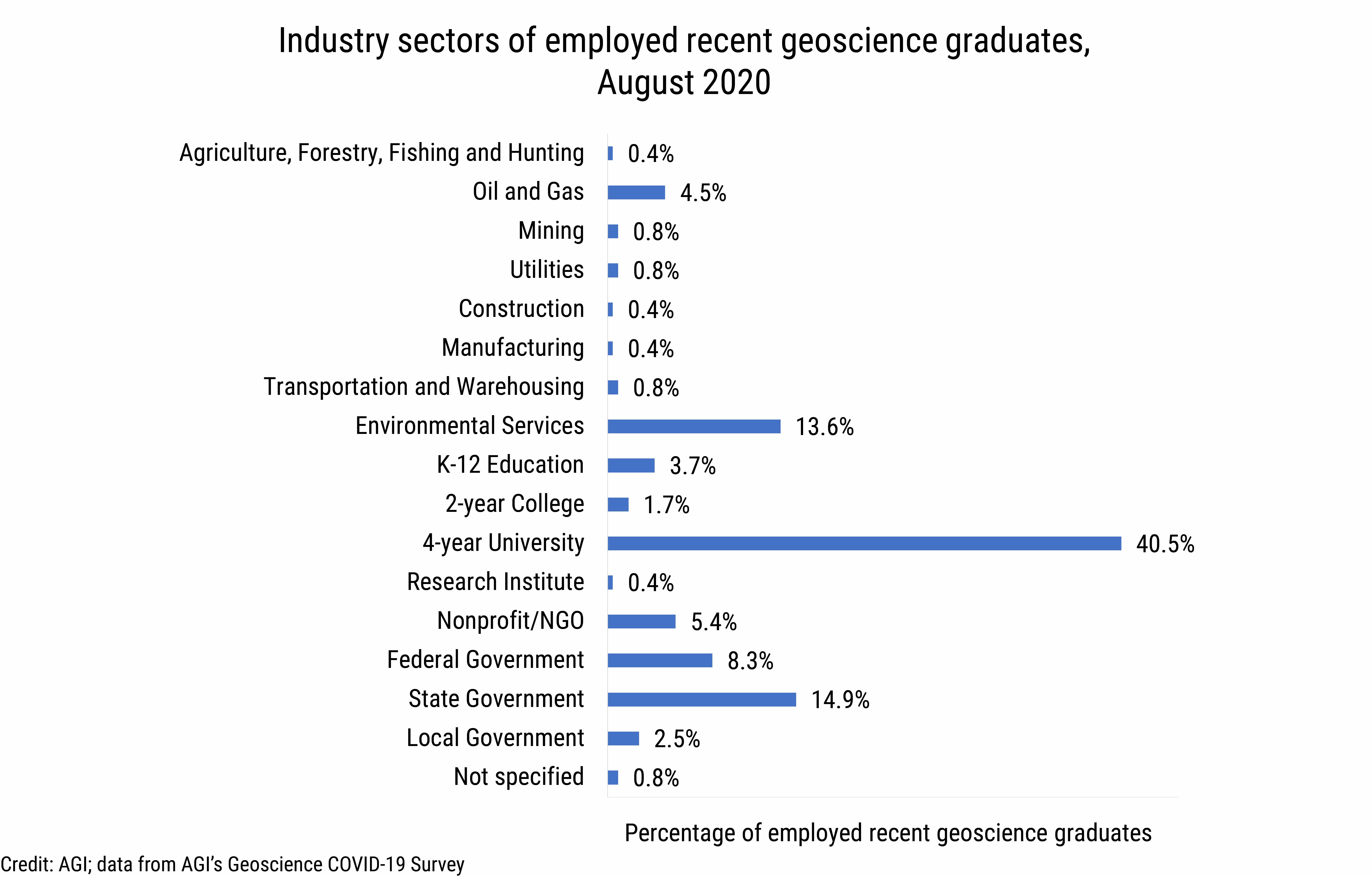
DB_2020-019 chart 03: Industry sectors of employed recent geoscience graduates, August 2020 (credit: AGI; data from AGI’s Geoscience COVID-19 Survey)
AGI

DB_2020-019 chart 04: Non-academic occupations of recent geoscience graduates (credit: AGI; data from AGI’s Geoscience COVID-19 Survey)
AGI
Unemployed recent graduates
While 56% of geoscience graduates who earned their degree in 2020
reported being unemployed, only 21% of graduates who earned their degree
in 2019 and 6% of graduates who earned their degree between 2014 and
2018 reported the same (see Figure 2). By degree level, a higher
percentage of bachelor’s graduates (40%) reported being unemployed than
those with master’s degrees (14%) or doctorates (2%).
Unemployed recent graduates are predominantly seeking employment in the
geosciences (77%), and just over half are also seeking employment
outside of the geosciences. The most common reasons for seeking
employment outside of the geosciences included a lack of job
opportunities within the geosciences and not having adequate training or
skills for available geoscience jobs. Other reasons mentioned included
not having the educational pre-requisites for available geoscience
jobs, better opportunities in another field, an inability to change
location to take a geoscience job, and a loss of interest in working
within the geosciences.
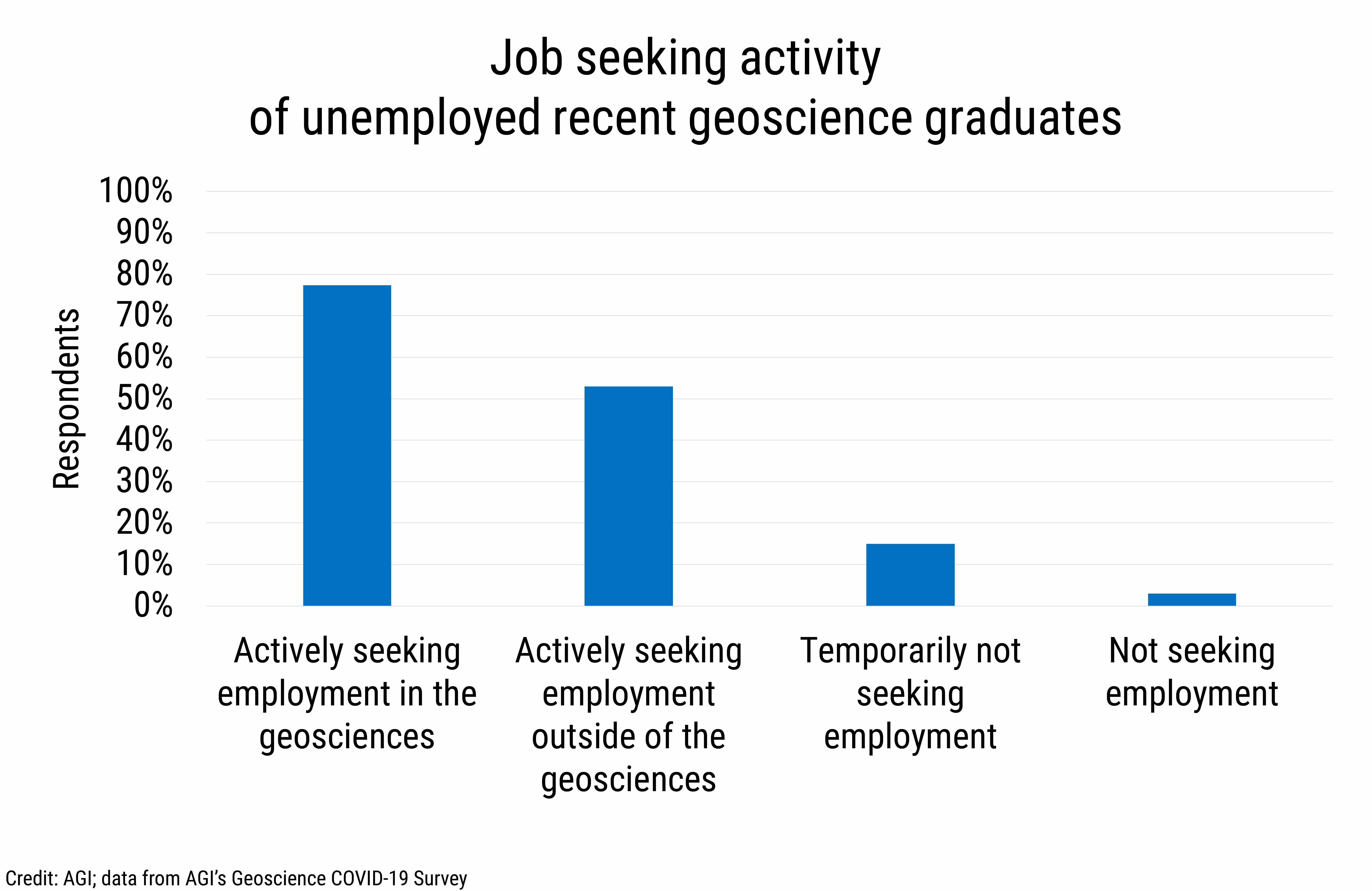
DB_2020-019 chart 05: Job seeking activity of unemployed recent geoscience graduates (credit: AGI; data from AGI’s Geoscience COVID-19 Survey)
AGI
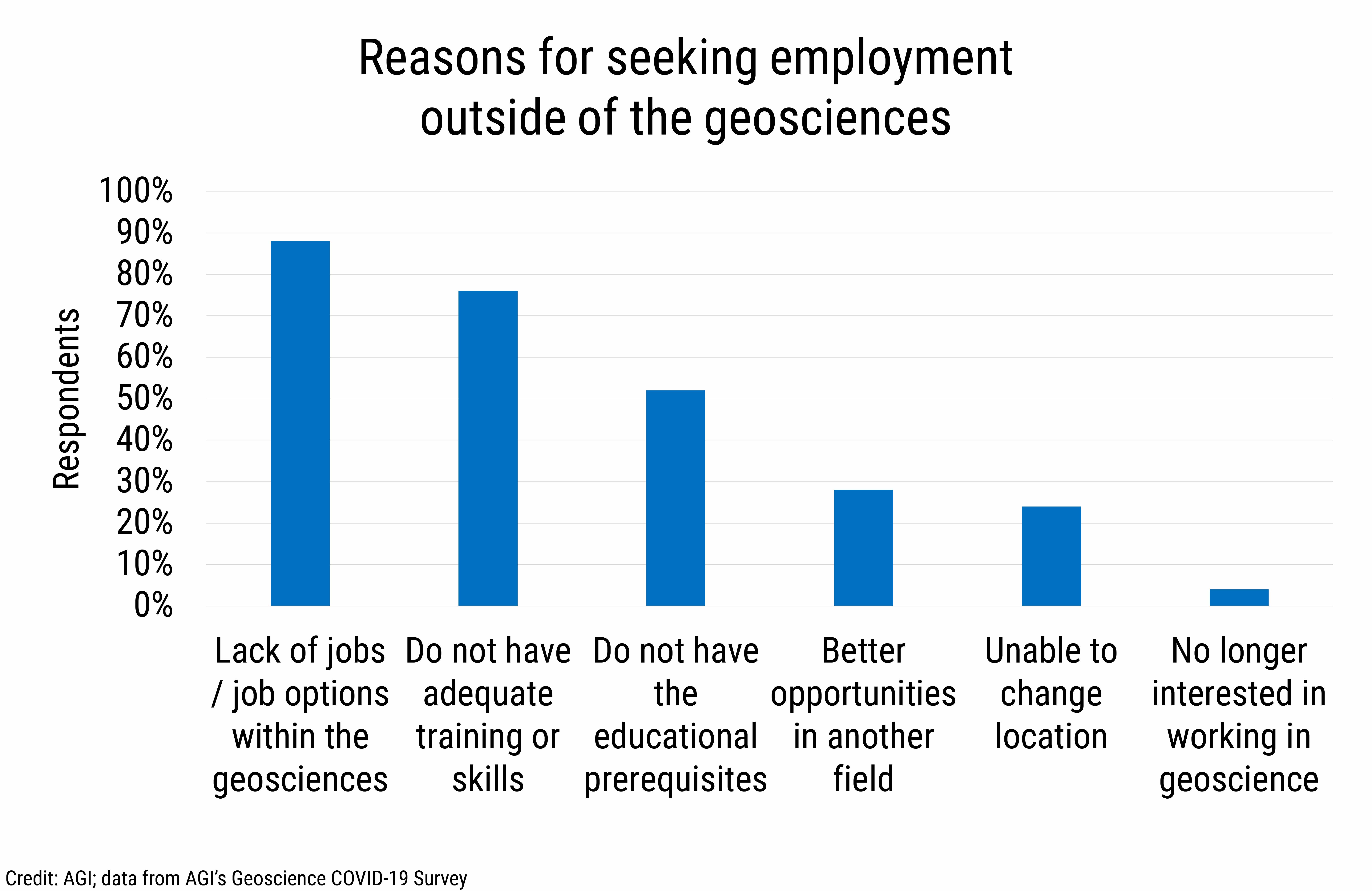
DB_2020-019 chart 06: Reasons for seeking employment outside of the geosciences (credit: AGI; data from AGI’s Geoscience COVID-19 Survey)
AGI
We will continue to provide current snapshots on the impacts of COVID-19
on the geoscience enterprise throughout the year. For more information,
and to participate in the study, please visit:
www.americangeosciences.org/workforce/covid19
Funding for this project is provided by the National Science Foundation
(Award #2029570). The results and interpretation of the survey are the
views of the American Geosciences Institute and not those of the
National Science Foundation.